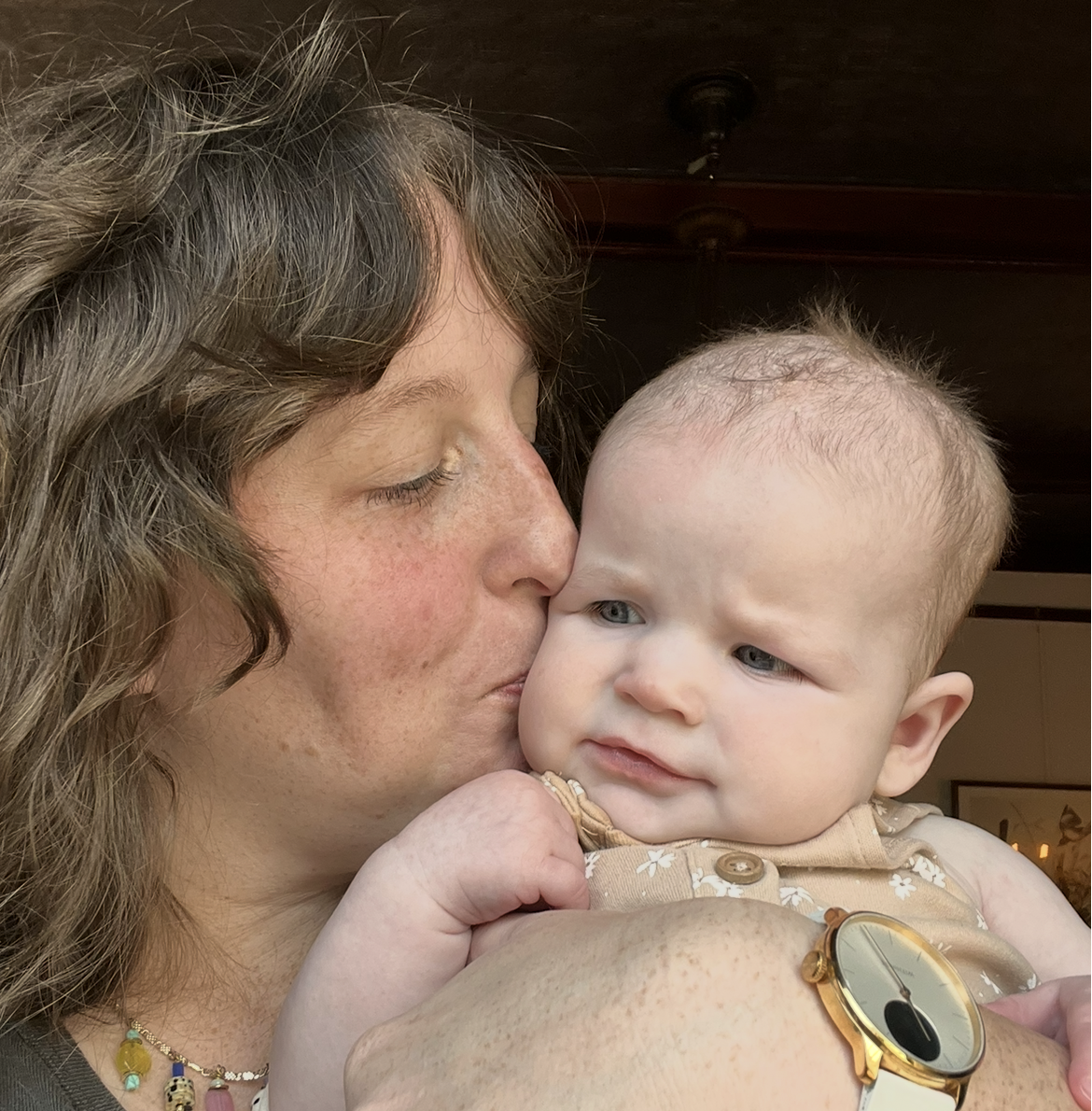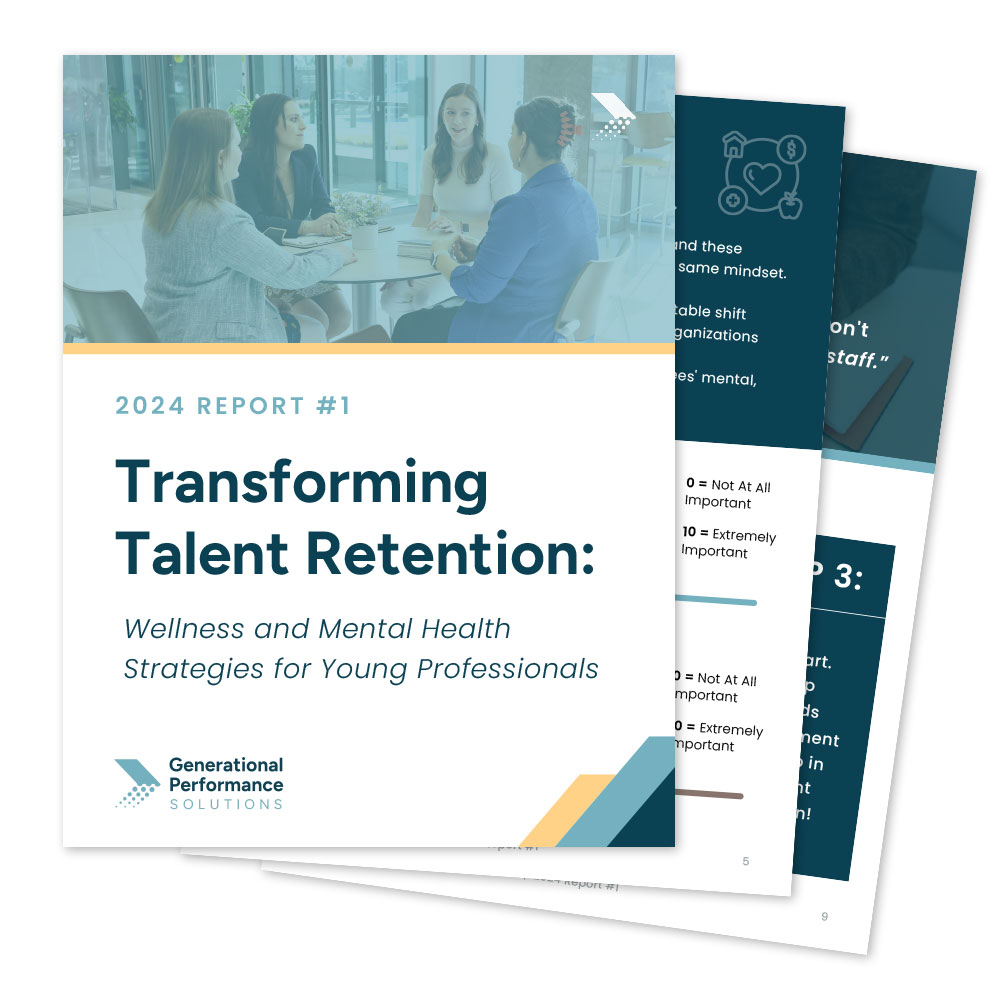In April of this year, I gave birth to my second child. It’s been an absolutely joy-filled time: welcoming our daughter into the family, seeing our 3-year-old become a big brother, and adjusting to life with two children. While our family was certainly in a “newborn bubble” for awhile, I did return back to work in August and have now had time to reflect on the past few months—ones I spent on leave from my job at GPS. Because our culture has been at a sort of crossroads regarding parental leave, the concept of maternity leave (and lack thereof, at some jobs) has been on my mind constantly throughout 2025, and I thought I’d share some of my experience.
The Physical
…And this is where the writer’s block sets in. As a new mother, when someone asks, “How was giving birth?” or “How was postpartum?” it can be difficult not to space out. How much of the truth does this person want to know? How much can I say without sounding ungrateful or honest beyond social politeness?
The truth is that I’ve given birth twice now—one of those times by c-section—and both were followed by difficult recovery processes. I’ve heard stories (magical tales?) of mothers who give birth and start feeling “back to normal” within a week, but that has not been my experience. For the first 3-5 weeks postpartum, basic daily tasks were a major struggle, and would’ve felt impossible without the support of my partner, my mom, and others who brought meals. On top of my own physical recovery, I adjusted to breastfeeding a newborn (which, if you or someone close to you has ever done this, you know that it’s a full time job on its own), and I juggled caring for a toddler while managing my own recovery. Make no mistake: it was a major medical event in my life.
The Logistical
In the midst of the talk of maternity leave, we can’t forget the crucial element: there is a new baby! We were so fortunate to have a healthy, 9-pound girl who needed no interventions or extra medical care. She didn’t need time in the NICU, medications, or extra monitoring by doctors—which are supports that so many babies need. And yet, caring for a healthy newborn is still difficult, especially when your own body’s output is 100% responsible for the baby’s nutrition. It took around 4 weeks before running an errand even felt worth it, considering 1) how often she needed feeding, 2) how I would juggle both her and a toddler, and 3) whether my own body was strong enough to handle all three of us. Not to mention, just attempting to get her to sleep through the night after weeks of waking up to feed her.
The Mental
There’s another aspect to new motherhood and postpartum that I think is talked about less often, but is still a major part of the experience: the mental load. This is the anxiety and management required of a new mother, and can often only be carried by her (though a good partner can certainly help). The mental load never clocks out, and it involves questions such as: How long did she feed? Am I making enough breastmilk? Did my toddler feel loved today, even though I could hardly give him any attention? Is the extra milk still on the counter, or did it get moved to the fridge? Have the bottles been sanitized? Will my body ever stop hurting? When will I be able to exercise again? When will my body feel like my body again? Is losing that much hair normal? Is this a normal amount for a baby to spit up, or should I call the doctor? Is tonight’s frozen dinner thawing on the counter yet?
New moms carry all of this in their head at once—and I cannot stress enough that these are the questions asked when you and your baby are typical, with no major health concerns (I’m sure that parents of preemies or babies with health scares can tell you that their mental load was even heavier). Bottom line: your brain never stops when you’re postpartum, and some of the emotions, anxiety, and nonstop thinking isn’t even in our control because it’s happening at a chemical, hormonal level that significantly alters our thoughts and feelings. Even multiple weeks into parental leave, this mental load is still having a major moment, which is why returning to work at 6-8 weeks often feels difficult for new moms.
Why Does It Matter?
Why do I bring all of this up—the physical recovery, the needs of a new baby, the mental load? I think we often hear headlines about moms in the workforce: Working moms are experiencing burnout, working moms are demanding more maternity leave, working moms are leaving the workforce… the articles keep coming. And while many of the headlines ring true to my personal experience, they often rely on the statistical data (which is valid), yet they fail to talk about the more vulnerable, up-close, personal aspect to all of this. The truth is this: that I needed all four of those months of leave to allow my body to heal (and truthfully… it’s still healing), to get to know my baby and her needs, to catch up on sleep (which may sound trivial but is actually very important), to adjust to being a mom of two, to feed my baby without the extra labor of using a breast pump, to regularly go to pelvic floor therapy, to process the emotional whiplash of giving birth, and so much more.
The GPS team is small (but mighty), and I’m forever grateful for the extra work that my teammates took on to give me those four months. We as a corporation have been inspired by other businesses who are “getting it right” with their parental leave policies (including Brains, with whom we discussed parental leaves for our blog), and I write this to encourage you to find ways to show up for the parents—not just mothers—on your team. No matter your company’s size or budget, there are many ways to create flexibility for the many life stages that your people will face throughout their careers. When we recognize the vulnerability of being human, and we choose to see that as an asset, we can show up for each other in ways that strengthen our team, improve our work culture, and create an environment where everyone can thrive.
What’s Next?
If you’re interested in learning more, or need assistance in updating your company’s policies, we’ve got you covered! Read more about our Work Optimization offerings, or contact us for a customized plan.
Did you like this week’s post? Then you might like these posts below.
Transforming Talent Retention: The Benefits and Wellness Report

